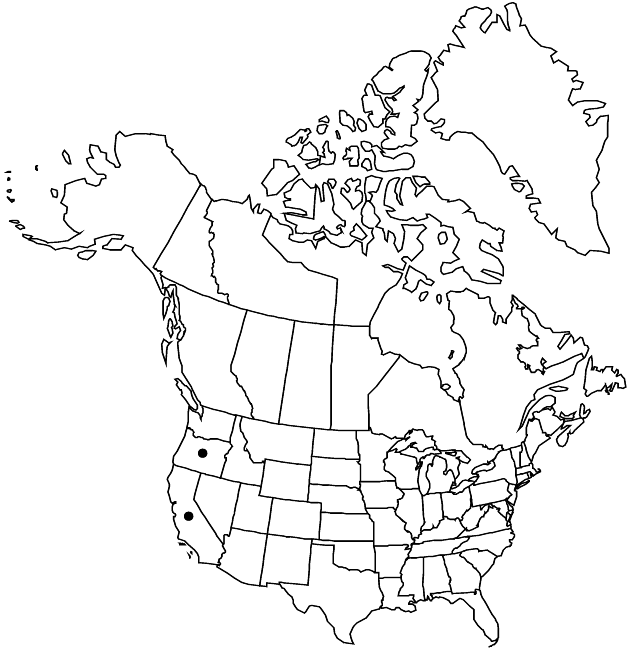Difference between revisions of "Eriophyllum lanatum var. grandiflorum"
Fl. W. Calif., 524. 1901.
FNA>Volume Importer |
FNA>Volume Importer |
||
| Line 7: | Line 7: | ||
|year=1901 | |year=1901 | ||
}} | }} | ||
| − | |basionyms={{Treatment/ID/ | + | |basionyms={{Treatment/ID/Basionym |
|name=Bahia lanata var. grandiflora | |name=Bahia lanata var. grandiflora | ||
|authority=A. Gray | |authority=A. Gray | ||
| + | |publication_title=in W. H. Brewer et al., Bot. California | ||
| + | |publication_place=1: 381. 1876 | ||
}} | }} | ||
|synonyms= | |synonyms= | ||
| Line 27: | Line 29: | ||
|distribution=Calif.;Oreg.;Mexico (probably extinct). | |distribution=Calif.;Oreg.;Mexico (probably extinct). | ||
|discussion=<p>Edward Palmer collected an eriophyllum believed to represent variety grandiflorum on Guadalupe Island, Mexico, in 1875. It was last reported in 1893 and is presumed extirpated by goats (R. V. Moran 1996).</p><!-- | |discussion=<p>Edward Palmer collected an eriophyllum believed to represent variety grandiflorum on Guadalupe Island, Mexico, in 1875. It was last reported in 1893 and is presumed extirpated by goats (R. V. Moran 1996).</p><!-- | ||
| − | --><p>L. Constance (1937) observed that <i></i>var.<i> grandiflorum</i> merges with <i></i>var.<i> croceum</i> at higher elevations. We have noted that the two taxa can occur side by side and maintain their identities where ploidy level differs.</p> | + | --><p>L. Constance (1937) observed that <i></i></i>var.<i><i> grandiflorum</i> merges with <i></i></i>var.<i><i> croceum</i> at higher elevations. We have noted that the two taxa can occur side by side and maintain their identities where ploidy level differs.</p> |
|tables= | |tables= | ||
|references= | |references= | ||
| Line 51: | Line 53: | ||
|publication year=1901 | |publication year=1901 | ||
|special status= | |special status= | ||
| − | |source xml=https://jpend@bitbucket.org/aafc-mbb/fna-data-curation.git/src/ | + | |source xml=https://jpend@bitbucket.org/aafc-mbb/fna-data-curation.git/src/f6b125a955440c0872999024f038d74684f65921/coarse_grained_fna_xml/V19-20-21/V21_897.xml |
|tribe=Asteraceae tribe Heliantheae | |tribe=Asteraceae tribe Heliantheae | ||
|subtribe=Asteraceae (tribe Heliantheae) subtribe Baeriinae | |subtribe=Asteraceae (tribe Heliantheae) subtribe Baeriinae | ||
Revision as of 18:50, 24 September 2019
Perennials (sometimes flowering first year; ± taprooted). Proximal leaves mostly alternate; blades linear to lanceolate or oblanceolate, pinnately lobed (usually beginning in proximal part of leaf, lobes 5–7), ultimate margins entire or laciniately toothed (teeth 1–5), serrate, or entire, revolute, abaxial faces woolly, adaxial less so or glabrate. Heads 2–6 per array or borne singly. Peduncles mostly 10–30 cm. Involucres 10–15 mm diam. Ray florets usually 10–13(–15), rarely 0; laminae 10–20 mm. Cypselae (2.4–)2.5–3.5(–4) mm; pappi (0.5–)0.8–1.2(–2) mm. 2n = 16, 32, 48, 64.
Phenology: Flowering Apr–Jun.
Habitat: Dry sites, grasslands, lower montane forests
Elevation: 30–1300 m
Distribution

Calif., Oreg., Mexico (probably extinct).
Discussion
Edward Palmer collected an eriophyllum believed to represent variety grandiflorum on Guadalupe Island, Mexico, in 1875. It was last reported in 1893 and is presumed extirpated by goats (R. V. Moran 1996).
L. Constance (1937) observed that var. grandiflorum merges with var. croceum at higher elevations. We have noted that the two taxa can occur side by side and maintain their identities where ploidy level differs.
Selected References
None.
